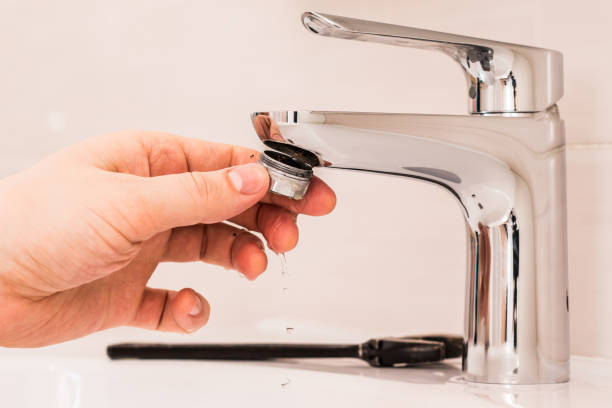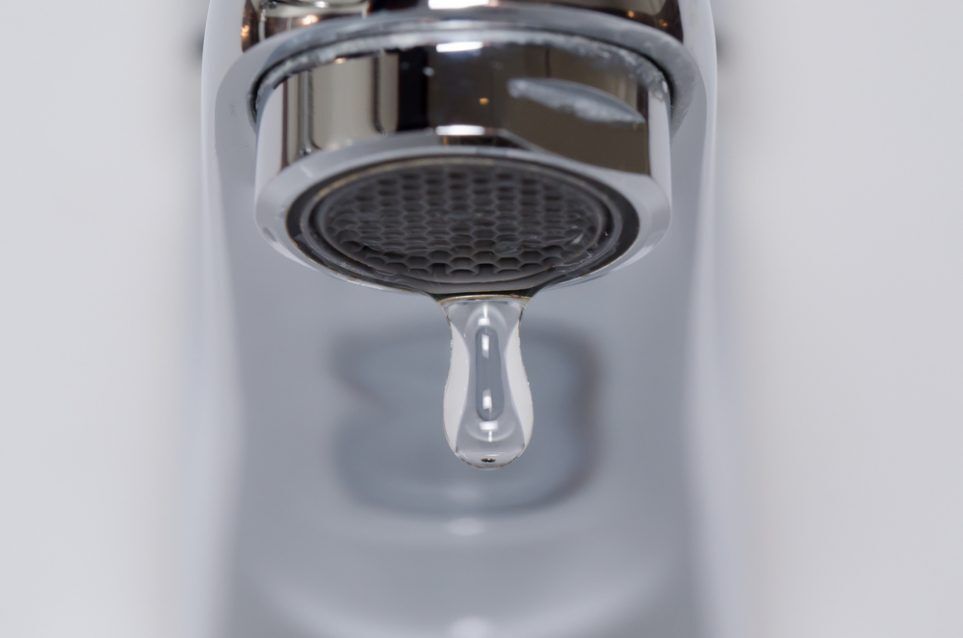The writer is making several good annotation on Water Dripping from Faucet: Why and How to Fix in general in the content down below.

Leaking faucets might appear like a small inconvenience, yet their effect surpasses just the annoyance of the noise. From wasting water to sustaining unnecessary economic expenses and health dangers, disregarding a leaking tap can result in various effects. In this short article, we'll explore why it's crucial to address this common household issue immediately and properly.
Wastefulness of Water
Environmental Impact
Leaking taps add significantly to water waste. According to the Epa (EPA), a single tap trickling at one drip per second can squander more than 3,000 gallons of water annually. This not only strains water sources however additionally impacts ecological communities and wildlife dependent on them.
Step-by-Step Guide to Fixing a Dripping Faucet
Tools Required
Prior to trying to repair a leaking faucet, collect the needed devices, consisting of an adjustable wrench, screwdrivers, replacement components (such as washers or cartridges), and plumber's tape.
Usual Faucet Issues and Their Solutions
Identify the type of faucet and the certain concern triggering the drip. Usual troubles consist of worn-out washing machines, rusty shutoff seats, or damaged O-rings. Refer to supplier guidelines or on the internet tutorials for detailed support on repair services.
Financial Costs
Raised Water Bills
Past the environmental influence, dripping taps can pump up water bills substantially. The gathered wastage with time converts right into higher energy expenses, which could have been avoided with prompt repair services.
Potential Residential Or Commercial Property Damages
Moreover, prolonged trickling can lead to harm to fixtures and surfaces surrounding the faucet. Water accumulation can create discoloration, deterioration, and also architectural concerns if left ignored, causing added repair work prices.
Health and wellness Problems
Mold and Mildew Growth
The continuous presence of wetness from a trickling faucet produces an optimal environment for mold and mold development. These fungi not only endanger indoor air high quality but likewise present wellness risks, especially for people with respiratory system problems or allergic reactions.
Waterborne Illness
Stationary water in dripping taps can come to be a breeding place for bacteria and other virus, raising the danger of waterborne diseases. Pollutants such as Legionella microorganisms thrive in stagnant water, possibly leading to severe diseases when ingested or breathed in.
DIY vs. Professional Repair service
Benefits and drawbacks of Do It Yourself Fixing
While some may attempt to repair a dripping tap themselves, do it yourself fixings include their own collection of challenges. Without proper knowledge and devices, do it yourself efforts can worsen the problem or lead to insufficient repair work, lengthening the trouble.
Advantages of Employing a Specialist Plumber
Employing a professional plumber guarantees that the underlying source of the leaking faucet is dealt with successfully. Plumbing professionals have the experience and equipment to identify and repair tap issues successfully, conserving time and lessening the threat of further damages.
Environmental Obligation
Private Payment to Preservation
Taking obligation for fixing trickling taps straightens with wider initiatives towards water preservation and environmental sustainability. Every individual's activities collectively make a significant impact on maintaining priceless sources.
Sustainable Living Practices
By focusing on timely fixings and embracing water-saving practices, people contribute to sustainable living methods that profit both existing and future generations.
Preventive Measures
Routine Upkeep Tips
To avoid leaking faucets, perform regular maintenance such as cleansing aerators, inspecting for leakages, and changing worn-out components quickly. In addition, take into consideration installing water-saving gadgets or upgrading to extra effective components.
Value of Prompt Repairs
Resolving trickling taps as soon as they're observed stops further water wastage and potential damage, inevitably conserving both water and money in the long run.
Impact on Building Worth
Assumption of Well-Maintained Property
Maintaining a residential or commercial property in good condition, including attending to upkeep problems like dripping taps, improves its regarded worth and value amongst possible purchasers or tenants.
Influence on Resale Worth
Properties with properly maintained plumbing components, consisting of faucets, command greater resale values in the property market. Dealing with trickling faucets can add to a favorable impression throughout building evaluations and negotiations.
Final thought
Addressing a trickling faucet exceeds plain comfort; it's a crucial step toward preserving water, lowering monetary expenses, and protecting health and wellness and home. Whether through do it yourself repair services or professional aid, taking action to repair leaking faucets is a small yet impactful way to advertise responsible stewardship of sources and contribute to a healthier, much more sustainable future.
How to Fix a Leaky Faucet: Step-by-Step Repair Guide
A leaky faucet may seem like a simple annoyance, but if it's not fixed promptly, that leak could cost hundreds to potentially thousands. From water damage to mold, mildew, and high water bills, even a tiny leak can be catastrophic if left unattended. Damage like this can even affect the overall value of your home, so it's important to take the right approach for leaky faucet repair. You may need the help of a plumber in some cases, but we've got a few tips you can try on how to fix a leaky faucet before calling the pros.
Four Faucet Types
When you're learning how to fix a leaky faucet, the first step is knowing what kind of faucet you're working with! There are four common types.
Cartridge Faucets
Cartridge faucets come in one- or two-handled varieties. In one-handled cartridge faucets, hot and cold water combines in a single cartridge. In the two-handled versions, hot and cold water are controlled separately and mixed in the faucet.
Ball Faucets
Ball faucets have a single lever you push up and down to adjust the pressure and rotate to change the temperature. A slotted metal ball controls the amount of water allowed into the spout.
Compression Washer Faucets
They're the oldest type of faucet, but they're still used in many homes — especially older ones. Compression faucets have two separate handles that, when turned, raise or lower the washer that seals a water valve. This valve stops water from flowing through the faucet when it is turned off.
Disc Faucets
Disc faucets rarely need to be repaired due to their maintenance-free design. The water flow is controlled by two discs — the upper one raises and lowers against a fixed lower disc, creating a watertight seal. If your disc faucet starts leaking, you may need to replace the seals or clean residue buildup from the inlets.
Fixing a Leaky Faucet
Step 1: Turn Off the Water
Whether you're learning how to fix a leaky bathtub faucet or how to fix a leaky kitchen faucet, always turn off the water supply to your working area when you're fixing a leak. The last thing you want is a flood added to your list of things to fix.
Look for the shutoff valves below your sink or around the tub and turn them clockwise to stop the water flow. If your faucet doesn't have shutoff valves, you may need to turn off the water for the whole house. Check to make sure it's off by turning the faucet on. If nothing comes out, you're ready to start the repair.
Step 2: Take Apart the Faucet
How you disassemble your faucet depends on the type of fixture you have. You can use a flathead screwdriver to remove the caps on top of the handle or handles for cartridge and compression faucets. Inside, you should see handle screws. Unscrew these with a screwdriver to remove the handle.
Disc- and ball-style faucets will typically have an inlet screw near the handle, and removing that will reveal the interior of the faucet.
Detach the Valve Stem
For cartridge- and compression-style faucets, you'll see the inner valve stem or cartridge once you remove the faucet handles. If you have a compression faucet, unscrew the brass valve stem. If you have a cartridge faucet, pull out the cartridge. If your cartridge has been in place for a while, it may require some tools or extra force to remove it due to mineral deposits.
Examine and Replace Parts
Once you've removed the parts, check them out to confirm what needs to be replaced. You may see corroded rubber washers, O-rings, stems, or cartridges. On a ball-style faucet, check the seats and springs for damage.
If you need to repair a leaky disc faucet, check the inlet and seals on the lower disc.
Once you determine what parts must be replaced, visit your local hardware store. Bring the damaged parts with you to ensure you can purchase the correct components to replace them.
Clean Valves and Faucet Cavity
If you've removed a stem or cartridge, you may notice mineral buildup in the faucet's threads. Use white vinegar to clean the valve seat by soaking it for a few minutes, then scrub it away with a soft toothbrush and rinse with warm water. You can also clean the interior of the faucet in the same way.
Reassemble the Faucet
Once your faucet is cleaned and the required parts have been replaced, it's time to reassemble it. Put the pieces back together and slowly turn the water supply back on. Doing this slowly is crucial because too much initial water pressure can damage the new hardware you've just installed.
https://homewarranty.firstam.com/blog/how-to-fix-leaky-faucet

I recently found that entry about Why It's Important to Fix Leaky Faucets when browsing on the web. You should take the time to promote this content if you enjoyed reading it. I cherish reading our article about .
Comments on “Why It's Required to Fix a Faulty Faucet”